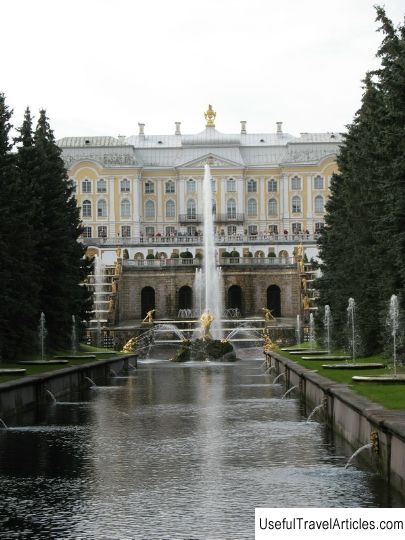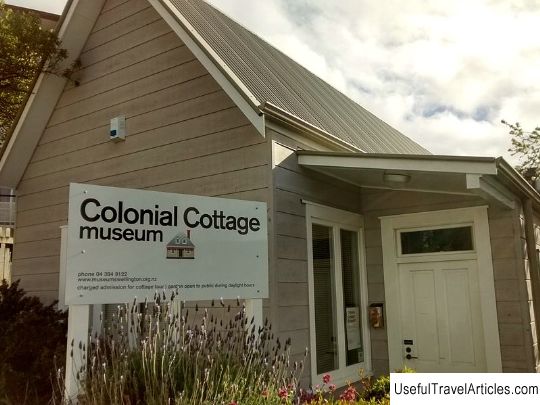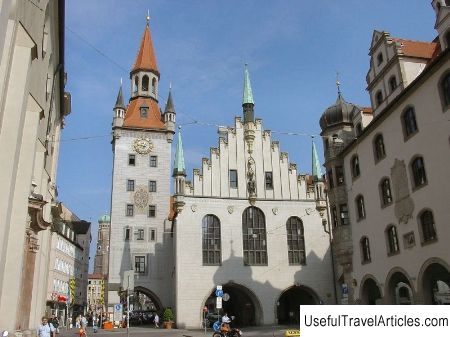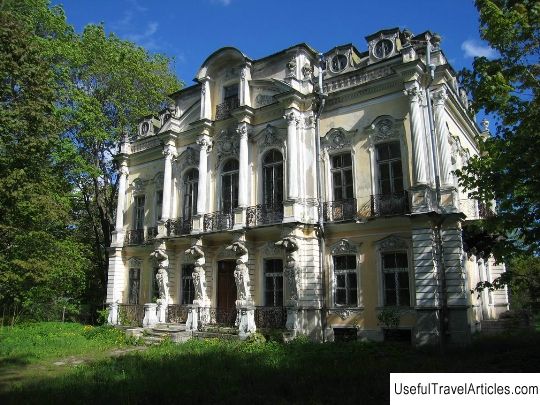Palace Cottage description and photos - Russia - St. Petersburg: Peterhof
Rating: 8,7/10 (765 votes) 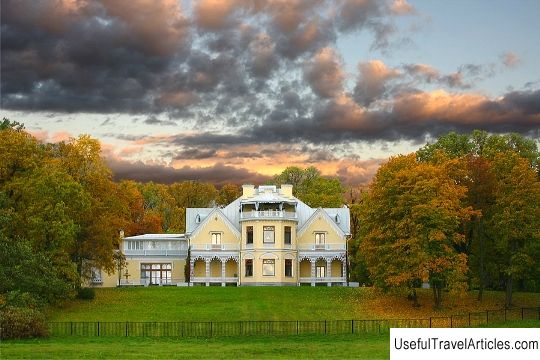
Palace Cottage description and photos - Russia - St. Petersburg: Peterhof. Detailed information about the attraction. Description, photos and a map showing the nearest significant objects. Photo and descriptionThe Cottage Palace (in English “cottage” means “cottage”, “country house” or “manor”) is the central architectural structure of the Alexandria palace and park complex. The palace was built with the use of neo-Gothic elements in 1826-1829. designed by architect A.A. Menelas for the family of Emperor Nicholas I. The construction of the palace was started in 1826 by order of Nicholas I on the site where the ruins of the estate Monkurazh A.D. Menshikov. The construction of the palace was completed in 1829. The cottage became the summer residence of the emperor and his wife Alexandra Feodorovna. The architectural design of the Cottage is designed in the Gothic style. The prototypes of the palace were English country houses, which were so popular in the first half of the 19th century. in Europe. The Cottage Palace is a two-storey compact building, divided into three parts and decorated with decorative and structural elements cast from cast iron. These are arcades with flowers, and lancet fences of terraces and balconies, and coats of arms, etc. They were cast at the St. Petersburg Alexandrovsky Foundry from models of modelers S. Zakulapin and M. Sokolov. The interior of the palace was painted by artist V. Dodonov and D.-B. Scotty. Gothic lattices, arches, stucco decoration brackets were made according to the models of S. Zakulapin and M. Sokolov. One of the main elements of the architectural and artistic design of the interiors of the palace is woodcarving by V. Zakharov. The marble finishing for the Cottage was made in the workshop of P. Triscorny. The parquets were performed by M. Znamensky and A. Tarasov. The author of furniture sets is A.A. Manelas. The furniture was made in the workshop of the court master G. Gambs. In hand-made carpets, furniture, stoves, marble fireplaces, the Gothic ornament is also repeated. Chandeliers, candelabra, clocks - everything is done in the Gothic style. At the Imperial Glass and Porcelain Factory, sets were made especially for this palace. In 1842-43. to the eastern facade of the palace, designed by architect A.I. Stackenschneider was added a Dining Room with a Marble Terrace, which is connected to the main building by a pointed arcade. The interior of the Dining Room continued the traditions of the old part of the building and is made in a neo-gothic style. The walls of the Dining Room are decorated with paintings by I.K. Aivazovsky, T. Guden, T.A. Neffa, S.M. Vorobyova, P.N. Orlova. In 1844, the sculpture "Madonna and Child" was installed in a wall niche on the northern facade of the building. Author - I.P. Vitali. The planning center of the Cottage is a cast iron staircase. The first floor of the building housed Alexandra Feodorovna's rooms: Chamber-Jungfer, Hallway, Study, Library, Dressing Room, Bedchamber, Reception, Living room, Dining room with buffet, Small reception room, Second floor: Nicholas I's study, Bathroom, children's rooms, two covered balconies ... Attic floor: Marine office, dressing rooms, staff rooms. The rooms on the ground floor are of the greatest interest. They are richer and more refined decorated, the interior of the premises of the second floor, with the exception of the Tsar's office, is more restrained, and the rooms themselves are small. After the revolutionary events of 1917, the palace became a historical and art museum. The materials of the scientifically based exposition made it possible to conduct many excursions, which acquainted visitors with samples of Russian and Western European art of the second quarter of the 19th century. During the war of 1941-45. most of the exhibits of the palace were evacuated (out of 2.5 thousand items that made up the exposition, 1980 were saved). During the hostilities, a Nazi medical center was located in the palace building. A significant part of the original furniture was lost, many oak carved panels, stucco decoration, wall paintings were lost, and the building itself was damaged. The restoration of the Cottage palace was carried out under the direction of the architect I.N. Benois NPO "Restorator". It was completed in 1978, and in 1979 the palace was opened to the public.         We also recommend reading Val di Cecina description and photos - Italy: Tuscany Topic: Palace Cottage description and photos - Russia - St. Petersburg: Peterhof. |
